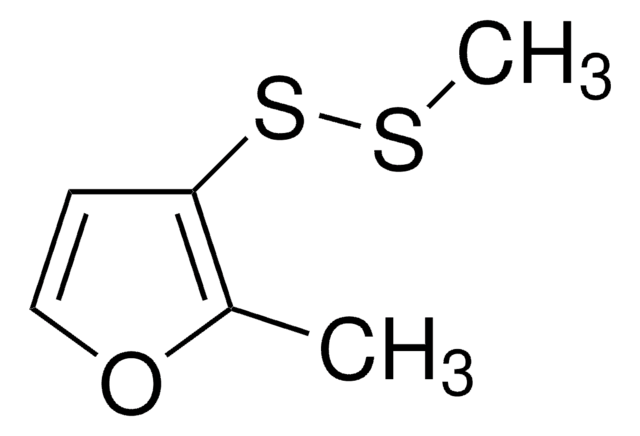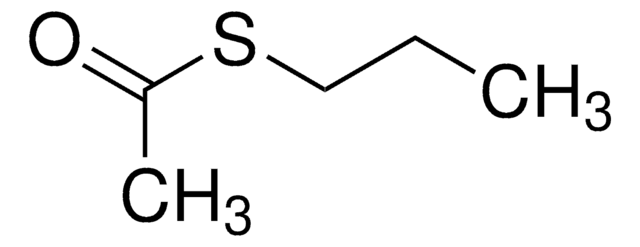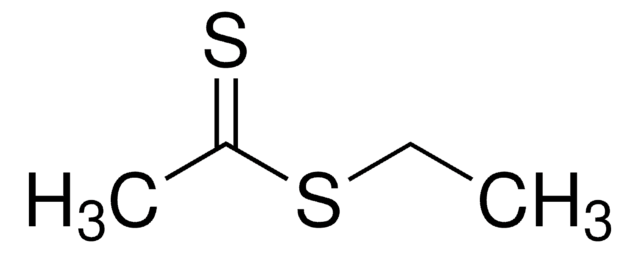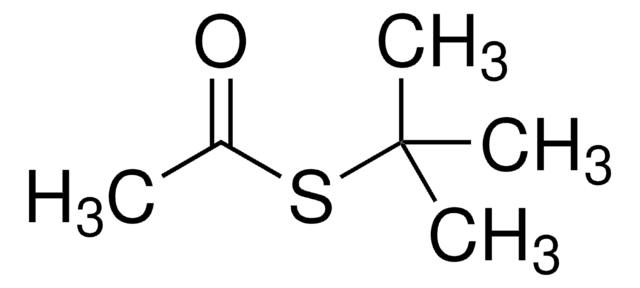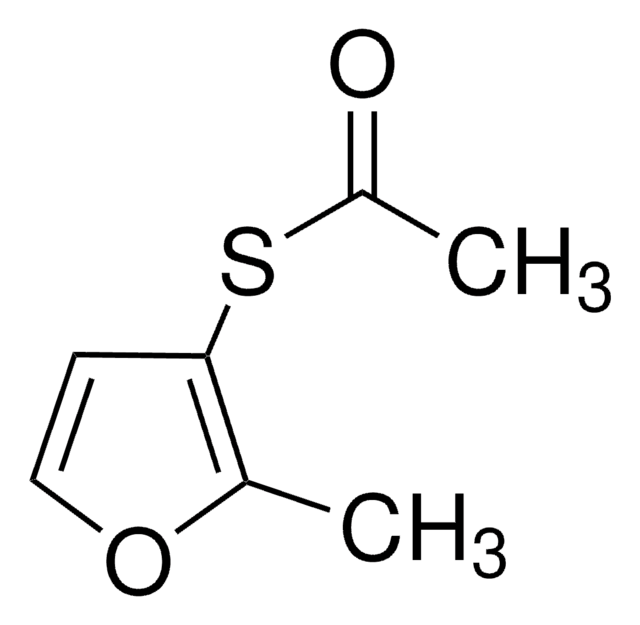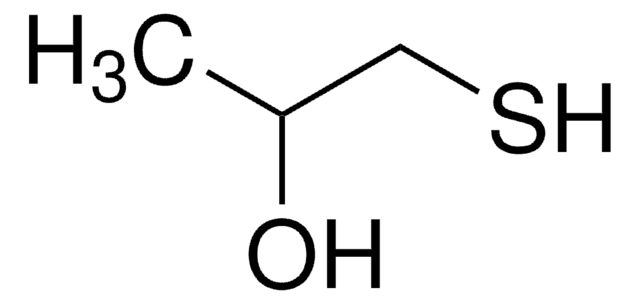W328200
Ethyl thioacetate
≥98%
Sinónimos:
S-Ethyl acetothioate, S-Ethyl ethanethioate, S-Ethyl thioacetate
About This Item
Productos recomendados
biological source
synthetic
Quality Level
agency
meets purity specifications of JECFA
assay
≥98%
refractive index
n20/D 1.458 (lit.)
bp
116 °C (lit.)
density
0.979 g/mL at 25 °C (lit.)
application(s)
flavors and fragrances
documentation
see Safety & Documentation for available documents
food allergen
no known allergens
organoleptic
garlic; onion; fruity; sulfurous
SMILES string
CCSC(C)=O
InChI
1S/C4H8OS/c1-3-6-4(2)5/h3H2,1-2H3
InChI key
APTGPWJUOYMUCE-UHFFFAOYSA-N
Categorías relacionadas
General description
Disclaimer
signalword
Danger
hcodes
Hazard Classifications
Acute Tox. 4 Oral - Eye Dam. 1 - Flam. Liq. 2 - Skin Irrit. 2 - STOT SE 3
target_organs
Respiratory system
Storage Class
3 - Flammable liquids
wgk_germany
WGK 3
flash_point_f
64.4 °F - closed cup
flash_point_c
18 °C - closed cup
ppe
Eyeshields, Faceshields, Gloves, type ABEK (EN14387) respirator filter
Elija entre una de las versiones más recientes:
¿Ya tiene este producto?
Encuentre la documentación para los productos que ha comprado recientemente en la Biblioteca de documentos.
Nuestro equipo de científicos tiene experiencia en todas las áreas de investigación: Ciencias de la vida, Ciencia de los materiales, Síntesis química, Cromatografía, Analítica y muchas otras.
Póngase en contacto con el Servicio técnico